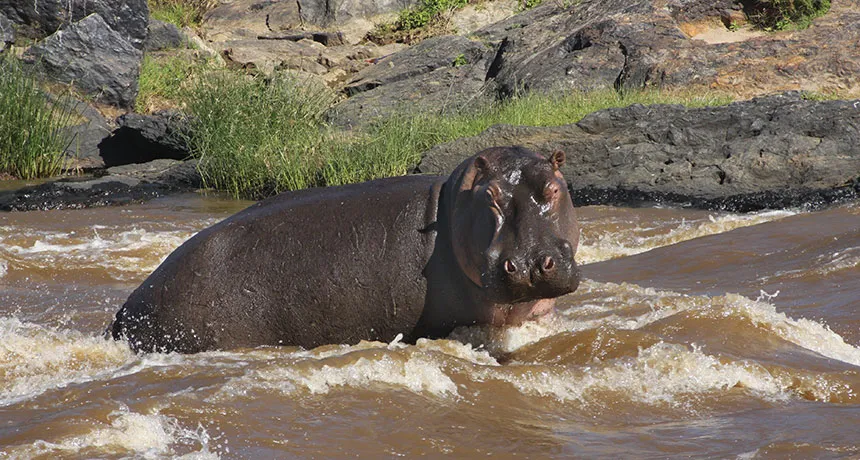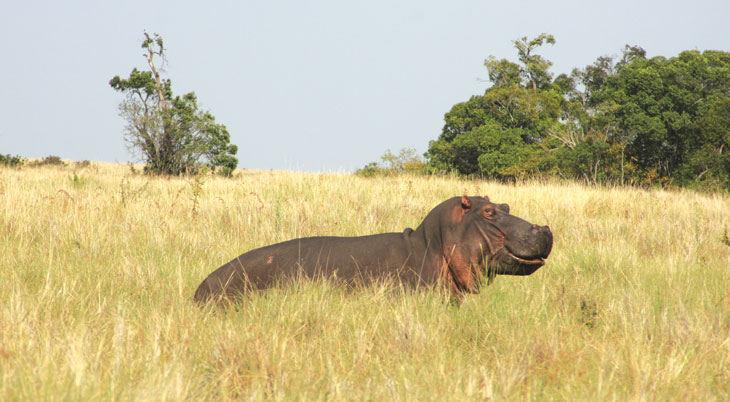Hippo poop cycles silicon through the East African environment
The animals play an outsized role in pumping a nutrient crucial to the food web into waterways

HIPPOOPING Hippos consume silicon-bearing grass and then excrete into lakes or rivers, such as this one in Kenya’s Mara River.
Amanda Subalusky







